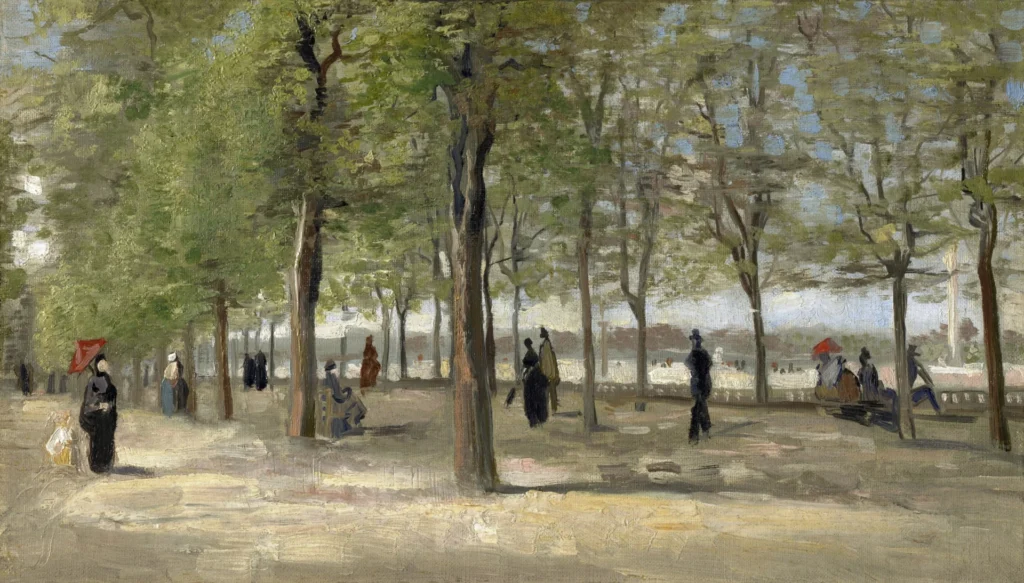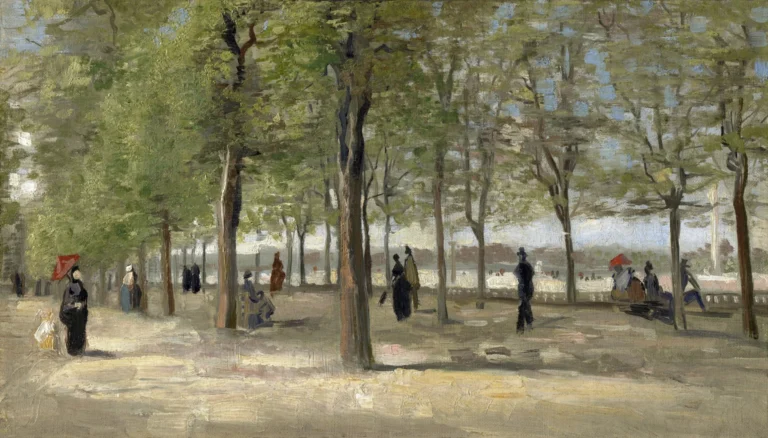Terrace In The Luxembourg Gardens (1886)
Painted in 1886, Terrace In The Luxembourg Gardens captures a bustling scene in one of Paris's beloved public parks. Van Gogh, drawing on the Impressionistic techniques of his contemporaries, infuses the work with vivid colors and dynamic light. The painting portrays everyday life in the gardens, showcasing the artist's ability to breathe emotion into ordinary moments and reflect the lively atmosphere of 19th-century Paris.
Year 1886
About the Artwork
This work emerged during a transformative time in Van Gogh's life after his relocation to Paris. Surrounded by Impressionist artists, he adapted their techniques to express the beauty of everyday scenes. The Luxembourg Gardens became a source of inspiration where he explored the interaction of light, shadow, and color, signifying a pivotal moment in his evolution as an artist. After Vincent's death, the painting remained in his family's possession, illustrating its significance and emotional ties, before becoming part of esteemed collections around the world.
Did You Know
Liked what you see? Add it to your collection.
Enjoyed reading? Share it.
... continued
Creation and Influence
After moving to Paris, Van Gogh was exposed to the works of Impressionist artists such as Claude Monet and Camille Pissarro, which influenced his style. This painting reflects his experimentation with Impressionist techniques, using small touches of pure color to capture the sunlight and shadows of the outdoor urban setting.
Subject Matter
The painting depicts people strolling through the Luxembourg Gardens, a popular public park in Paris. It captures the vibrant and lively atmosphere of the gardens, showcasing Van Gogh's ability to render everyday scenes with a unique and expressive touch.
Medium and Dimensions
The painting is executed in oil on canvas and measures 10 5/8 x 18 1/8 inches (27 x 46 cm). The frame dimensions are 17 5/8 x 25 1/16 x 3 1/4 inches (44.8 x 63.7 x 8.3 cm).
Provenance
The painting has a well-documented provenance. It was likely owned by Theo van Gogh, Vincent's brother, after Vincent's death. It then passed through several owners, including Johanna Gesina van Gogh-Bonger, Theo's wife, and later through various galleries and collectors. It was acquired by Robert Sterling Clark in 1937 and is now part of the collection at the Sterling and Francine Clark Art Institute in Williamstown, Massachusetts.
Style
The painting is characterized by its Post-Impressionist style, marked by bold and expressive brushwork and the use of vivid colors to capture the light and atmosphere of the scene.
Current Status
The painting is currently on view at the Sterling and Francine Clark Art Institute.










